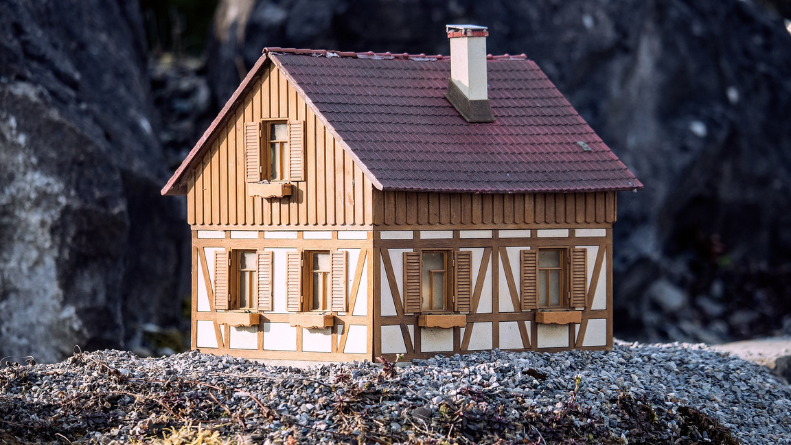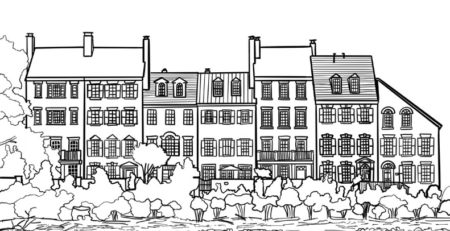The Great UK Home Shrink: Why are Houses Getting Smaller?
The United Kingdom has a rich history of architectural design and innovation, but recent trends have shown that houses in the UK are getting smaller. A comprehensive study of 450,000 UK houses has found that home sizes have been decreasing every decade since the 1950s. What factors have led to this shift, and how does it affect homeowners and property investors? This article will delve into the history of UK house sizes, examine the reasons behind this trend, and explore its implications for both homeowners and investors.
A Comprehensive History of UK House Sizes
The Early 20th Century: 1930s
The study shows that rooms were at their smallest in the 1930s, in the wake of a deep recession. The average living room measured 172.6 sq. ft., master bedrooms were 165.7 sq. ft., and kitchens spanned 132 sq. ft. The small size of homes during this period can be attributed to economic constraints and a desire for efficient use of space.
Post-War Expansion: 1950s
Following World War II, the UK experienced a period of growth and prosperity. This led to an expansion in home sizes, with the average living room in the 1950s measuring 237 sq. ft. The construction of larger homes was driven by a need for more comfortable living spaces to accommodate growing families and a general improvement in living standards.
A Gradual Decline: 1960s to 2020s
Despite the growth in home sizes during the mid-20th century, the study reveals that house sizes have been declining every decade since the 1950s. The average living room of a new build in 2020 was found to be almost 20% smaller than that of a 1950s home, measuring just 194.9 sq. ft. This gradual decline in house sizes raises questions about the factors driving this trend.
The Driving Forces Behind Shrinking UK Houses
Increasing Demand for Housing
One of the primary reasons for decreasing house sizes in the UK is the increasing demand for housing due to a growing population. The rising number of people in the UK has led to a housing shortage, as the demand for homes has outstripped the supply.
High Land Prices
The high cost of land, particularly in densely populated urban areas, has incentivised developers to prioritise the number of homes they can build over the size of individual units. This has led to the construction of smaller homes on smaller plots of land to maximise the number of available units.
Changing Lifestyle Preferences
Modern homebuyers’ preferences have also played a role in the shrinking size of UK homes. Smaller homes require less maintenance and are generally more energy-efficient, making them more attractive to environmentally conscious consumers. Additionally, the rise of remote work has led to an increased demand for flexible living spaces, which can be easier to achieve in a smaller home.
Government Regulations and Incentives
Government regulations and incentives have also contributed to the trend towards smaller homes. For example, building regulations that focus on energy efficiency and sustainability have encouraged developers to build more compact homes with lower carbon footprints.
The Impact on Homeowners and Property Investors
Challenges for Homeowners
The shrinking size of UK homes has implications for homeowners, as smaller homes can mean less living space and storage. This can affect the overall comfort and functionality of the home, particularly for growing families who may need to adapt and make the most of limited space.
Opportunities and Risks for Property Investors
For property investors, the trend toward smaller homes can present both challenges and opportunities. On the one hand, smaller homes may be less attractive to potential tenants who are looking for more space, potentially leading to longer vacancy periods or lower rental rates. On the other hand, smaller homes can also be more affordable for first-time buyers and investors, allowing them to enter the property market more easily. Additionally, smaller homes may appeal to a broader range of tenants, including young professionals, couples, and retirees looking to downsize.
Future Prospects for UK House Sizes
The Role of Innovation and Technology
As the UK continues to grapple with housing shortages and an increasing demand for homes, it is likely that the trend toward smaller houses will persist. However, innovative design solutions and a focus on maximising the functionality of limited space could help alleviate some of the challenges associated with shrinking home sizes. Advances in technology and the growing awareness of sustainable living could lead to the development of more energy-efficient, space-saving appliances and home features, helping to make smaller homes more liveable and appealing to potential buyers and tenants.
Sustainable and Modular Housing
In the future, we may see an increase in the popularity of sustainable and modular housing, which allows for customisable layouts and adaptable living spaces. These innovative housing solutions can offer a way to address the shrinking size of UK homes while maintaining a high level of comfort and functionality.
The Importance of Urban Planning
Effective urban planning will also play a crucial role in addressing the challenges of shrinking home sizes in the UK. By creating well-designed communities with a mix of housing types, including affordable and appropriately sized homes, urban planners can help ensure that the needs of all residents are met. This may involve the development of high-density housing in city centres and the promotion of mixed-use developments, combining residential, commercial, and recreational spaces to create vibrant, liveable communities.
Conclusion
The study revealing the decrease in UK house sizes every decade since the 1950s sheds light on the challenges and opportunities facing both homeowners and property investors in the UK. As the demand for housing continues to outpace supply and consumer preferences evolve, the trend toward smaller homes is likely to continue. By staying informed and adapting to these changes, homeowners and investors can make the most of the opportunities presented by this trend and contribute to a more sustainable and efficient housing market in the UK.
Innovative design solutions, advances in technology, sustainable and modular housing, and effective urban planning will play a crucial role in addressing the challenges associated with shrinking home sizes. By embracing these developments, the UK can work towards creating a housing market that meets the diverse needs of its population, while promoting sustainable living and efficient use of resources.
ARE YOU READY TO START INVESTING?
Subscribe to our mailing list now for exclusive deals, investment guides and the latest information from the property market.







